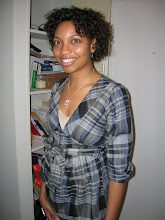I know this is alittle after the fact, but I just wanted to show some pics of the Intersexions show I was recently apart of at Stonehill College. The show just de-installed this past weekend, but it was such a great show. There was an amazing turn out, and I was so thrilled to be in the presence of such great artists. They also did a great job on the catalog, which was very professional.
I was also encouraged that my work had such a great response in the show, and I was moved by the number of viewers that could identify with the works. Perhaps not from the context of the work but the work itself spoke to them in some way.
There was an amazing artist panel on November 20th, where I joined with four other artists in the show( Steve Locke, Caleb Cole, James Montford, and Michele L'Heureux) to talk about our work.

The panel was very energized, and brought forth so many strong questions. There were times where I could literally feel the tension in the room. I think race and identity is unmistakably one of the most difficult things to talk about in such a large setting, because so many people have such different views and feelings about it. Obviously, from one's perspective that has a history of pain due to racism the feelings are much more emotional. I thought it was powerful to get the three perspectives of race from myself, Steve Locke, and James Montford, as we all had different individual experiences that crossed generationally but also gender and geographical origins. I was also taken by Caleb and Michele's talk as well, because the way that they discussed their work truly opens a door into the process and what the artist feels the viewer will see into the work. It was an amazing opportunity to meet all of them, some I've only known about but never met in- person.
The overall response from the exhibit was phenomenal. It was curated by the Exhibitions and Colletions class at Stonehill College, and I have to admit that they did an exceptional job with putting together the show as did Candice Smith Corby(Gallery Director and Arts Coordinator for Stonehill) and Carole Calo, who were the instructors for the class. The show was very smart and a quite unusual topic for a student-curated show but I was glad that they chose to be somewhat controversial when most tend to stay safe. There were several notable members of the Boston arts community who saw the show and felt strongly that the show should be a traveling exhibition. I personally would love to have the opportunity to show with these artists again, as their work in relation to my own opens up so many questions about the context of race, identity, and gender in our society.



























 This semester has moved as slow as ever. Though I've contacted many different artists I've had the greatest challenge this semester to find a studio mentor. I'm not really sure why. But I've been taking it all in stride. My focus has been really more so on trying to get my ac
This semester has moved as slow as ever. Though I've contacted many different artists I've had the greatest challenge this semester to find a studio mentor. I'm not really sure why. But I've been taking it all in stride. My focus has been really more so on trying to get my ac

 dmother and uncle. I'm really interested in how to meld the quilting theme into my work somehow, I'm slowly beginning to see how I might think of doing that. But seeing Mr. Huckaby's work definitely gave me lots to think about.
dmother and uncle. I'm really interested in how to meld the quilting theme into my work somehow, I'm slowly beginning to see how I might think of doing that. But seeing Mr. Huckaby's work definitely gave me lots to think about.

















